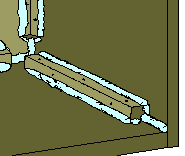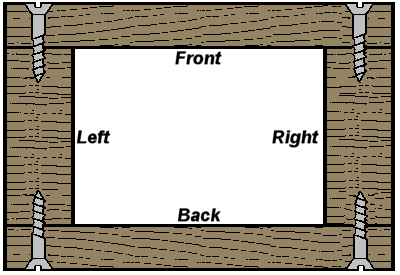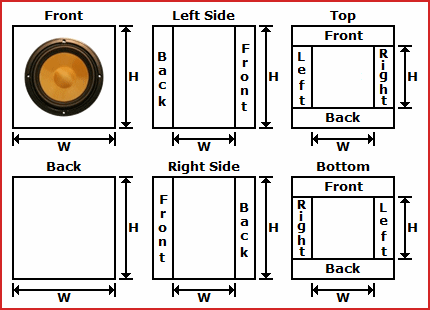Speaker Box Volume Calculator / Designer Help
Use the Speaker Box Volume Calculator.
Calculating volume of a box is as simple as Width X Depth X Height. This calculator provides some additional features such as factoring in the thickness of the wood.
The first section of this calculator lets you select the speaker size - from 3" to 18". Your speaker selection doesn't affect the speaker volume calculation. It is simply for reference to make sure your speaker width & height will fit the speaker on the front of the box.
The next section lets you enter the external width, height, and depth of the speaker box. Usually, you are trying to get to a specific volume based on manufacture recommendations or a calculated volume from our Speaker Designer using the manufacturer's speaker driver specifications. You can enter the width, height, and depth in millimeters (mm), centimeters (cm), inches (in) or feet (ft). Just check the radio button to the right of the width text box to change the units.
10mm = 1cm 2.54cm = 1in or 1" 12in = 1ft or 1'
Below that you can enter the box volume that will be displaced by the speaker driver itself. The cone and magnet of the speaker are inside the box and therefore reduce the volume of the box. Speaker displacement will vary based on the thickness of the front baffle of the speaker, whether you flush mount the driver to the baffle and several other variables. If your manufacturer hasn't provided driver displacement information, then use our Speaker Driver Displacement Calculator.
On a ported enclosure, the volume taken up by the port should not count toward the overall speaker volume. Enter the diameter of the and the length of the port. For sealed enclosures leave these values zero or blank.
Next you can check the radio button to indicate the thickness of the wood (MDF) that you are using. The width, height, and depth provided above are external dimensions of the speaker box. The thicker the wood, the less volume available inside the box. There are two sets of wood thicknesses to choose from: nominal and actual. When you purchase a 3/4" sheet of plywood from a lumber store, the plywood will usually measure 23/32" thick - unless it is laminated. Choose the size that best fits the wood you have.
Battens are internal bracing used to hold the speaker box together. See our page on Speaker Box Construction for more information. This calculator assumes that there are 12 battens (one for every joint) and that they extend the full width of the joint stopping 1" from either end. Check the correct radio button to indicate the size (if any) of the battens you are using. Note: The battens are assumed to be square, so 1" means 1"x1".

The rest of the fields on the screen are automatically calculated and updated anytime you make a change. The volume is the width X height X depth minus the area displaced by the driver, battens and the wood itself. You can choose mm3, cm3, in3, ft3, and liters for the volume unit. Many speaker vendors will list their desired speaker box volume in liters.
The rest of the fields show the sizes of the 6 pieces of wood that make up the speaker box. Remember to account for the wood thickness when determining the size of each piece of wood. In the example below, the pieces of wood for the left and right sides of the box do not extend the full depth of the box. This is because the front and back sides of the box overlap the other 4 sides. There are 3 different options for how the different panels overlap. Just check Option 1, 2, or 3 to see the different layouts. The width and height of all 6 side panels is updated every time you make a change. Remember that the panel sizes are also dependent on the width of the wood.

